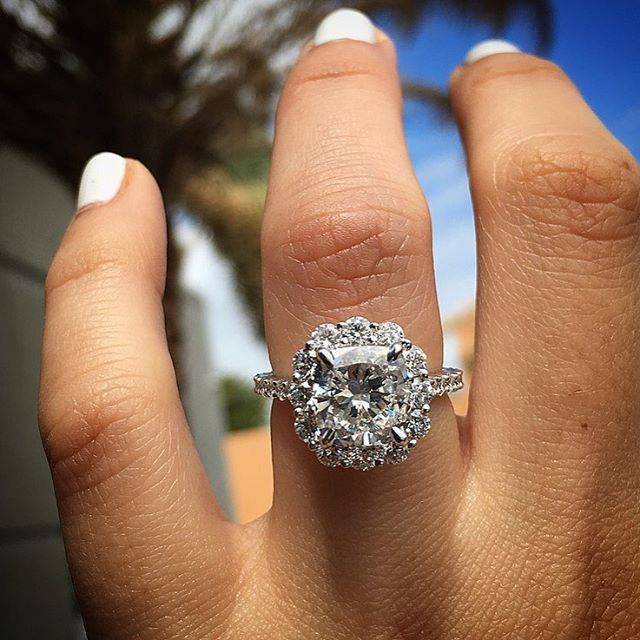Diamond Clarity Lingo

Earlier this week, we talked about different terms we use when describing, selling, and buying diamonds. And while that list is far from comprehensive, it makes a great jumping off point for a subcategory of diamond jargon that’s earned a post all its own: diamond clarity. Clarity isn’t quite as complicated to discuss as, say, cut is. But it’s still a nuanced factor of diamond grading. These are the main talking points we use when discussing our diamonds.
- Inclusion – This is any internal characteristic in a diamond, often described as a flaw. The vast majority of diamonds have some flaw, whether it’s tiny enough to never notice or so bad it renders the diamond suitable only for industrial uses. Flawless diamonds, on the other hand, are incredibly rare. And even a flawless diamond, once set, gets downgraded to an internally flawless diamond. So most of the time, we’re talking about diamonds with some type of internal characteristic.
- Blemish – A blemish, on the other hand, is a flaw on the surface of a diamond. Any blemishes are also taken into account when determining the clarity grade.
- Bruise – A bruise is a chip on the diamond’s surface that may or may not have root-like “feathers” that extend down into the diamond’s interior.
- Feather – A feather is a fracture with fine lines that radiate out, giving it the appearance of a feather. It can appear white or clear depending on the angle from which it’s viewed.
- Pinpoint – A tiny crystal, usually white, within the diamond.
- Cloud – A group of pinpoints. While pinpoints are pretty much impossible to spot, a cluster like this might make them visible.
- Cavity – A cavity is a type of blemish that’s usually a result of a natural flaw within the stone. It’s an opening or depression in the surface.
- Chip – A chip is pretty self-explanatory. It’s a shallow nick in the diamond’s surface, however unlike a cavity blemish, it’s usually man-made as the result of the diamond cutting process.
- Needle – A needle is a long, rod-like inclusion that’s usually white or transparent.
- Twinning Wisps – These inclusions are a direct result of defects within a diamond’s crystal structure. The way it grew can create these errant structures, especially if the diamond took a break while forming – say a few thousand years or so – then resumed under more favorable conditions.
This is just scratching the surface (which would be a blemish) of diamond clarity lingo. But hopefully it gives you some insight into the many, many variations of inclusions and blemishes that affect a diamond’s grade. And more important than its grade, its appearance.





